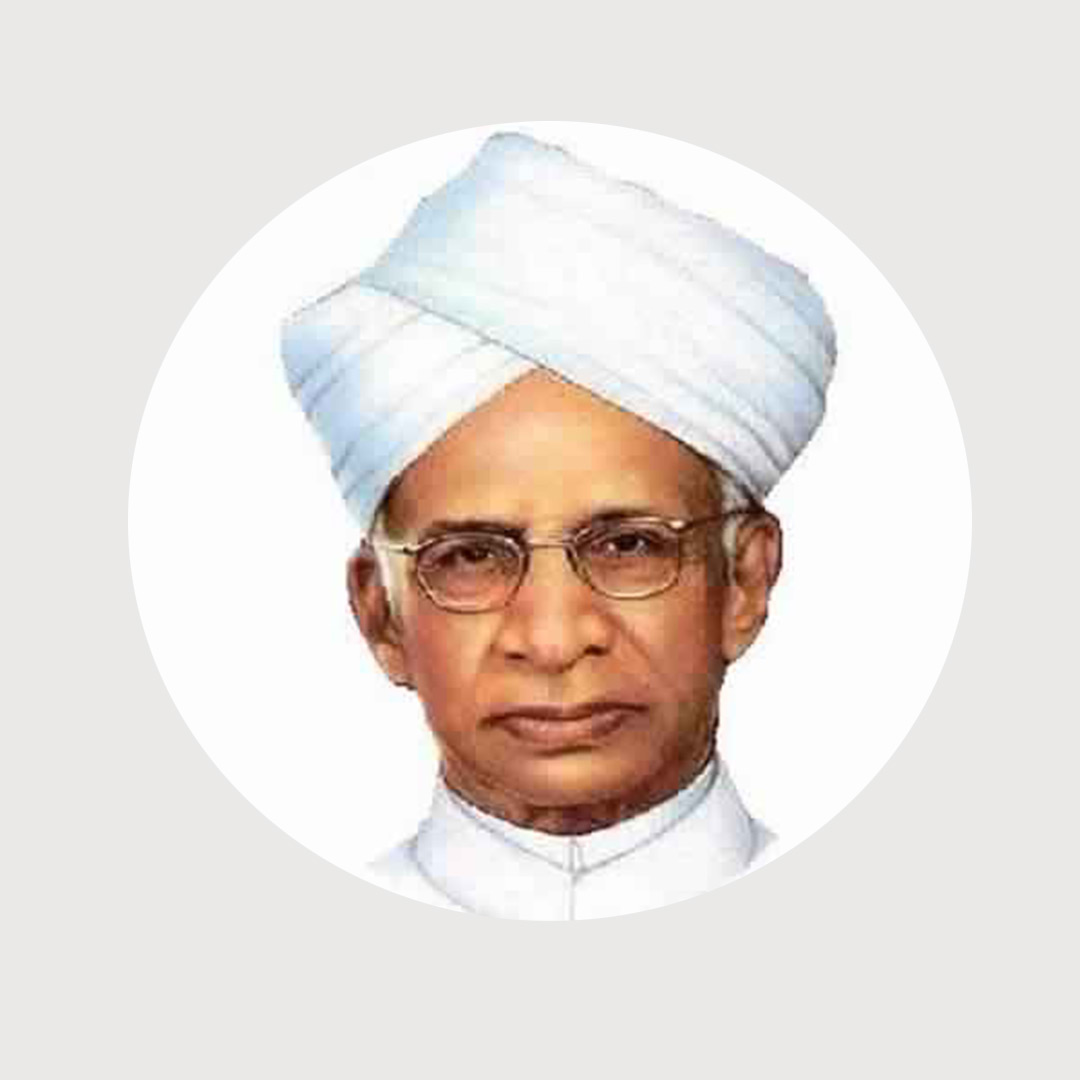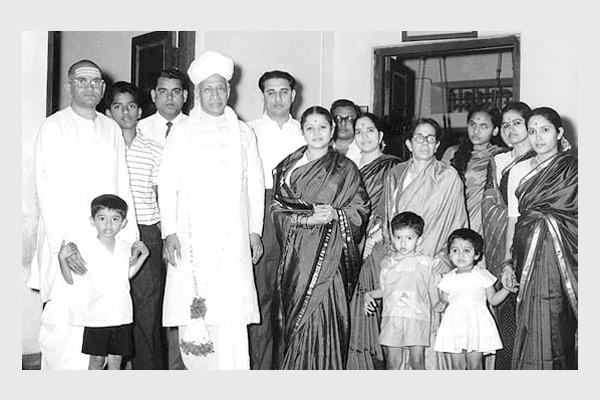Please enter the code we just sent to whatsapp 91-11-46710500 to proceed
Didn't Receive OTP?

Every year, on September 5th, India celebrates Teacher’s Day on the birthday of Dr. Sarvepalli Radhakrishnan. Who exactly was Dr. Sarvepalli Radhakrishnan? Discover more about Dr Radhakrishnan’s history, early life, education, accomplishments, and passing in the article provided below.
Originally from India, Sarvepalli Radhakrishnan was a true Renaissance man – a scholar, politician, philosopher, and statesman. He played vital roles in Indian history as the first Vice President of the country and later its second President.
Radhakrishnan wasn’t just an actor; he was also an insatiable author. For his lifetime, he championed what he called his faith as Hinduism or Vedanta or the religion of the Spirit. His writings were meant to exhibit the philosophical depth and ethical basis of his basic understanding of Hinduism.
What truly set Radhakrishnan apart was his intellectual bridge-building skills. He had no difficulty moving back and forth between the East and West’s philosophical traditions which informed much of his work. This made him a sought-after scholar when it came to interpreting Hinduism for the Western World.
This biography will expound on several aspects regarding Sarvepalli Radhakrishnan starting with his early life and family background, through his education to his teaching career, political rise, and eventual legacy.
Sarvepalli Radhakrishnan, born on the 5th of September in 1888 in Tiruttani (now part of Tamil Nadu, India) belonged to a Telugu-speaking Brahmin family who followed the Niyogi caste. The father, Sarvepalli Veeraswami, worked at a revenue office for a local landlord while his mother, Sarvepalli Sita was from a nearby village called Sarvapalli in the Nellore district of Andhra Pradesh. Radhakrishnan’s childhood was spent partly in Thiruthani and partly in Tirupathi towns.
Sarvepalli Radhakrishnan was a towering figure in 20th-century India, who wasn’t only a philosopher but also contributed to numerous other areas as an intellectual influence on the nation. He was born on September 5, 1888, in Tiruttani (now Tamil Nadu) which is located within what was then known as Madras Presidency in British India.
He became a national figure when he was elected as India’s first Vice President (1952-1962), and was known for his dignified and effective leadership. His impact would go beyond this when he became president from 1962 to 1967, advocating for the importance of culture and education.
Radhakrishnan’s visionary philosophical thought outlived him long after his death. As a statesman and an advocate of education, he represented India internationally. His unflagging interest still connects Indian philosophy with the world—a legacy that lasts even after he died in 1975. Scholars, educationalists, and leaders across generations throughout India and beyond have since had renewed motivation by reading through his eventful life and work.
Radhakrishnan's academic path was a trailblazer's journey. Starting at Thiruttani's K.V. High School, his thirst for knowledge led him to various institutions. In 1896, he broadened his horizons at the Hermannsburg Evangelical Lutheran Mission School in Tirupati and later at Walajapet's Government High Secondary School.
Vellore's Voorhees College became his next stop for high school. Finishing his "First of Arts" class, he enrolled at Madras Christian College, where he truly flourished. This institution became his academic home, awarding him both a bachelor's and a master's degree in 1906.
One early academic triumph was his undergraduate thesis, "The Ethics of the Vedanta and its Metaphysical Presuppositions." This work tackled criticisms of Vedanta's lack of ethical grounding. The thesis impressed his professors, Rev. William Meston and Dr. Alfred George Hogg, and remarkably, it was published when Radhakrishnan was just twenty.
When sixteen years old, Sarvepalli Radhakrishnan married Sivakamu his cousin. Their marriage lasted fifty-one years during which they lived happily and supported each other in all aspects of life. They were blessed with six kids including five girls and a boy. His son Sarvepalli Gopal is well-known as an Indian biographer of both his dad and Jawaharlal Nehru a writer who became very famous for his biographies of Dad and Jawaharlal Nehru.

Sarvepalli Radhakrishnan Family
There were several important landmarks in Radhakrishnan’s academic journey. His first job was as an assistant professor at Madras Presidency College’s Department of Philosophy in April 1909. Also, in 1918, he lectured at Maharaja’s College of Mysore, which was the beginning of his tenure as a Professor of Philosophy.
In that period, he wrote scholarly articles for top-ranking journals like The Quest, Journal of Philosophy, and International Journal of Ethics. He published his first book “Rabindranath Tagore’s Philosophy” during this time which argued that according to him; Tagore reflected the genuine Indian Spirit.
Radhakrishnan became a professor of philosophy at the University of Calcutta in 1921 where he held the King George V Chair of Mental and Moral Science. Furthermore, his academic engagements took him to international platforms such as when he represented the University of Calcutta at the British Empire Universities Congress in June 1926 and went on to attend Harvard University’s International Congress of Philosophy in September 1926.
During this period, one of his most notable lectures was the Hibbert Lecture on the Ideals of Life, which he gave at Manchester College (Oxford) in 1929. It later appeared in book form as “An Idealist View of Life”. In 1931 he was called to Manchester College to take up the position left vacant by Principal J. Estlin Carpenter where he was able to present a Comparative Religion lecture to students from the University of Oxford.
In acknowledgment of his education service, Radhakrishnan received a knighthood from King George V in 1931. He continued in various academic capacities such as being Vice-Chancellor of Andhra University between 1931 and 1936. The following year, 1936, saw him become a Fellow of All Souls College at Oxford and an appointment as Spalding Professor of Eastern Religions and Ethics at the University of Oxford.
Radhakrishnan was more politically active in the years after India’s independence. He was a member of UNESCO’s Executive Board from 1946 to 1951 and led the Indian delegation. In this period, he was also a member of the Indian Constituent Assembly.
To balance his academic responsibilities with his roles at UNESCO and the Constituent Assembly, Radhakrishnan embraced new challenges. Prime Minister Jawaharlal Nehru appointed him as the Indian Ambassador to Moscow in 1949 where he served until 1952. His philosophical and political beliefs were put into practice when he got elected to the Rajya Sabha.
He became India’s first Vice-President in 1952 and then its second President in 1962. As such, his tenure was characterized by an emphasis on global peace and universal fellowship for instance during such crises as the Korean War and Indo-Pakistan hostilities.
He called into question whether international organizations like Leagues of Nations are effective or not and thus advocated for a new kind of internationalism based on metaphysical roots that would promote better understanding among cultures and societies through tolerance.
The intellectual contributions of Radhakrishnan spanned the gap between Eastern and Western thoughts, defending Hinduism against ignorant Western critics while incorporating Western philosophical and religious ideas.
Radhakrishnan’s metaphysics as a leading advocate of Neo-Vedanta drew from Advaita Vedanta but was recast for a modern audience. The absolute or Brahman is the ultimate ground of being that is both grounded in and sanctioned by human nature with its truth and diversity. He regarded creeds and theological systems as mental formulations, symbols of religious experience or feelings.
According to Radhakrishnan’s classification of religions, Advaita Vedanta occupied the highest position because it depended on intuition. He saw Vedanta as the culminating point in religion since it gave direct intuitive experience and inner realization.
Sivakamu (his wife) died on 26th November 1956 and this widowed him till he passed away. In 1967, he withdrew from public presence and spent the last eight years of his life in a Mylapore house which he had planned. On April 17, 1975, Sarvepalli Radhakrishnan died with an enduring heritage as a philosopher, scholar, and statesman.
Dr. Sarvepalli Radhakrishnan has received many prestigious awards and honors during his remarkable career in recognition of his numerous outstanding contributions to various fields. Some of the notable awards awarded to him include:
1. Bharat Ratna: The highest civilian award in India was presented to him in 1954 for his great services to society.
2. Knighthood by King George V: In 1931, Dr Radhakrishnan was knighted by King George V for the outstanding performance and input he made in academia and public life.
3. Pour le Mérite for Sciences and Arts: This prize was given by Germany in 1954 which honored his important role as a scientist and an artist.
4. Sash First Class of the Order of the Aztec Eagle: Mexico gave this accolade to him in 1954 considering his significant contributions towards international relations and exchange of culture.
5. Membership of the Order of Merit: Dr. Radkrishnan became a member of the Order of Merit, which is a prestigious honor in the United Kingdom that recognizes exceptional work done by individuals for their country's accomplishments.
These prizes are a testament to Dr’s brilliance; reflecting on how deeply he has affected so many people through philosophy, education, politics, and diplomacy among others.
Shape Your Kid's Future with Bambinos Classes | Bambinos.live India's No. 1 English Communication Platform For Kids | Book a Free Class Now